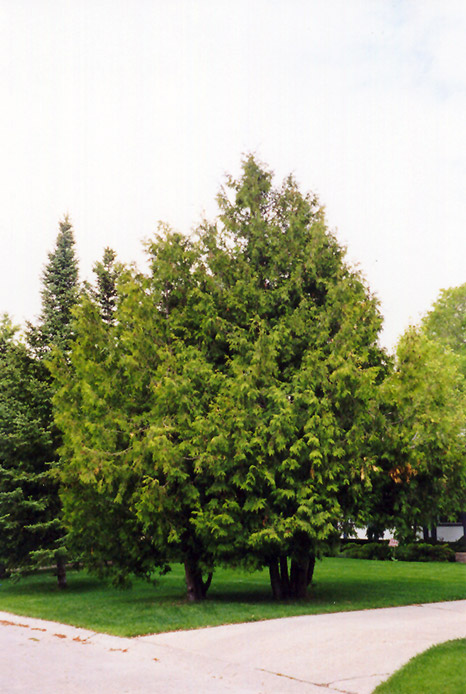Plant Finder
Height: 30 feet
Spread: 20 feet
Sunlight:
![]()
![]()
Hardiness Zone: 2b
Other Names: Eastern White Cedar
Description:
An extremely hardy and rugged northern evergreen; the species is typically a tall, pyramidal tree with reddish peeling bark, very attractive, however foliage tends to yellow in winter; numerous and diverse cultivars are available
Ornamental Features
Arborvitae is primarily valued in the landscape for its distinctively pyramidal habit of growth. It has rich green evergreen foliage. The scale-like sprays of foliage remain green throughout the winter. The shaggy antique red bark adds an interesting dimension to the landscape.
Landscape Attributes
Arborvitae is a dense evergreen tree with a strong central leader and a distinctive and refined pyramidal form. Its relatively fine texture sets it apart from other landscape plants with less refined foliage.
This is a relatively low maintenance tree. When pruning is necessary, it is recommended to only trim back the new growth of the current season, other than to remove any dieback. It has no significant negative characteristics.
Arborvitae is recommended for the following landscape applications;
- Shade
- Vertical Accent
- Hedges/Screening
Planting & Growing
Arborvitae will grow to be about 30 feet tall at maturity, with a spread of 20 feet. It has a low canopy with a typical clearance of 2 feet from the ground, and should not be planted underneath power lines. It grows at a slow rate, and under ideal conditions can be expected to live for 50 years or more.
This tree does best in full sun to partial shade. It is quite adaptable, prefering to grow in average to wet conditions, and will even tolerate some standing water. It is not particular as to soil type or pH. It is somewhat tolerant of urban pollution, and will benefit from being planted in a relatively sheltered location. Consider applying a thick mulch around the root zone in winter to protect it in exposed locations or colder microclimates. This species is native to parts of North America.
This Plant Finder tool is an online catalog representing many of the varieties that we carry over the course of the season, and is intended for informational purposes only. Inventory varies seasonally, so we cannot guarantee that every plant will be in stock at all times - please contact the store for current availability. It does not include our entire inventory of plants, so be sure to visit us to see varieties that may not be represented on this list.

